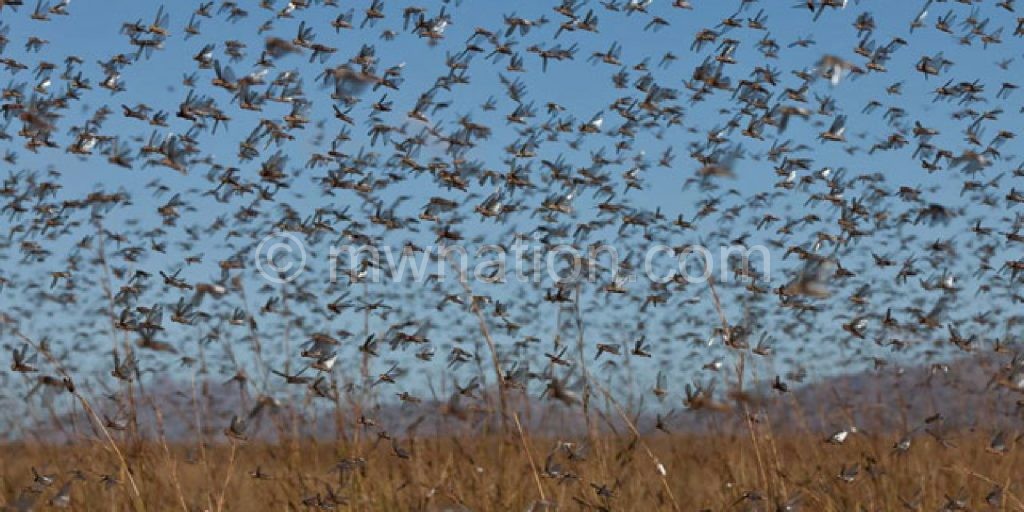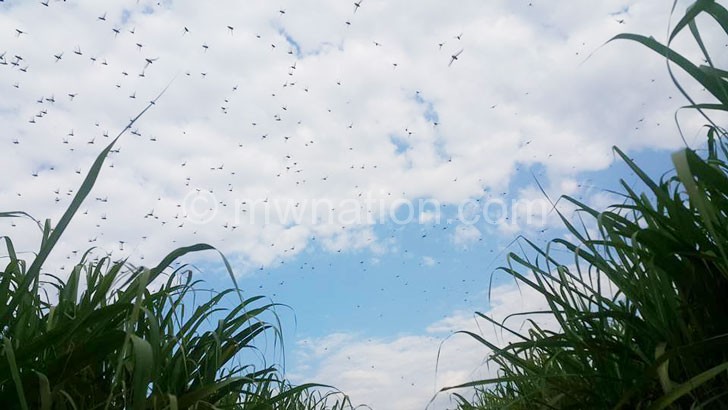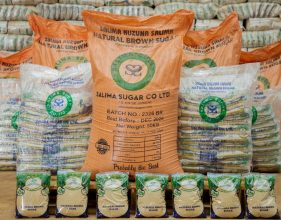Locusts spread devastation, economy under threat
Locusts that recently destroyed over 30 hectares of maize crop in Nsanje have crossed over to Chikwawa where they have affected 405 hectares of sugar cane belonging to Illovo Sugar (Malawi) Limited at the firm’s Nchalo Estate.
Shire Valley Agriculture Development Division (ADD) principal crop protection officer Ringstone Taibu and Illovo spokesperson Irene Phalula confirmed the development in separate telephone interviews yesterday.

The locusts—concentrated in one of the most food insecure zones that hoped winter cropping of maize could help soften the hunger bites—may worsen the humanitarian crisis that government and international relief agencies are already grappling with.
While the latest national average figures show that around 73 percent of the 16 million Malawians—roughly seven in every 10 people you may meet at a market—are food insecure, Chikwawa and Nsanje have 90 percent of its people without food, according to a Malawi Vulnerability Assessment Committee (Mvac) report.
And if not contained, the locusts—which the Ministry of Agriculture, Irrigation and Water Development says can cover a distance of between 400 and 500 kilometres a day—could spread nationwide and render impotent any efforts at maximizing crop production.
That would have devastating effects on the macro-economy with economic growth—already revised downwards from 5.1 percent to 3.1 percent—taking a knock. Inflation—largely influenced by food and currently hovers around 21.5 percent—could rise even more sharply, cutting disposable incomes of households already suffering under the weight of high cost of living.

At another level, rising inflation would also gnaw at real returns on savings and investments, thereby discouraging investment.
The rising inflation may also force monetary authorities to raise interest rates, with the net effects being high loan defaults and slow down in private sector investment—all of which could snowball into an economic downturn that can only worsen poverty; slash government revenue collection, especially from taxes, which could hit social spending and investment in public infrastructure.
For Illovo, the locusts could devastate one of the top three export crops—sugar—with the others being tobacco and tea, which are currently attracting depressed prices at their auctions.
Phalula said the swarm arrived at the estate on Monday evening and landed on 120 hectares of sugarcane field before blanketing 405 hectares of mature sugarcane plantations.
“After landing, the swarm moved to a field with 50 hectare of sugarcane before stopping in another field with 120 hectares of sugarcane.
“Later, it spread to another field with 115 hectares and this shares boundary with the maize fields where we are doing winter cropping,” said Phalula.
Despite saying in earlier interviews that Illovo was prepared to stop the locusts from attacking their fields, the swarm devoured sugarcane leaves in the listed fields.
Phalula, however, said the damage will not affect yield.
She said after noticing the swarm was moving towards the maize fields and fearing that it might destroy the crops during the night, an aerial spray of cypermethein was commissioned immediately supported by individual sprays on the ground throughout the night.
On his part, Taibu said cypermethein does not kill the locust, but produces a smell that scares the pests. Phalula admitted that the measure was temporary.
“The preferred chemical that kills the locust is Fenetrothion, but we don’t have it in our stocks. Instead, yesterday morning we sprayed Fipronil, but it is not effective because it kills locusts after 48 hours. Currently, the locusts are in the fields, but weak,” she said.
Meanwhile, the cane grower has assured Malawians that they are in control of the situation. Phalula said the 115 hectares of maize crop is protected from the locusts with the Cypermethein spray.
She said: “We were planning to procure the preferred chemical from South Africa, but government told us that it has some Fenetrothion, which it recommends for killing locusts and they will send to us today [Tuesday].”
Ministry of Agriculture, Irrigation and Water Development Principal Secretary, who until yesterday had not responded to our last questionnaire sent to her on August 4 2016, promised to confirm the arrangement and share with us government’s position through email, but as we went to press, she had not responded to our questionnaire.
Taibu said the swarm, which is about two kilometres long and taking about 30 minutes to cross an area, has terrorised a number of areas and its crossing to Chikwawa was expected.
“After being spotted in Bangula, the swarm went down to East Bank, particularly in Livuzu area, where we have many marshes. Our team is on the ground to document the amount of damage and intensify the spraying of cypermethein in all fields with young maize,” said Taibu.
Last week Taibu said government had engaged International Red Locust Control Organisation for Central and Southern Africa (Irlcocsa) to intervene, but he was in the dark on whether help is on the way.





